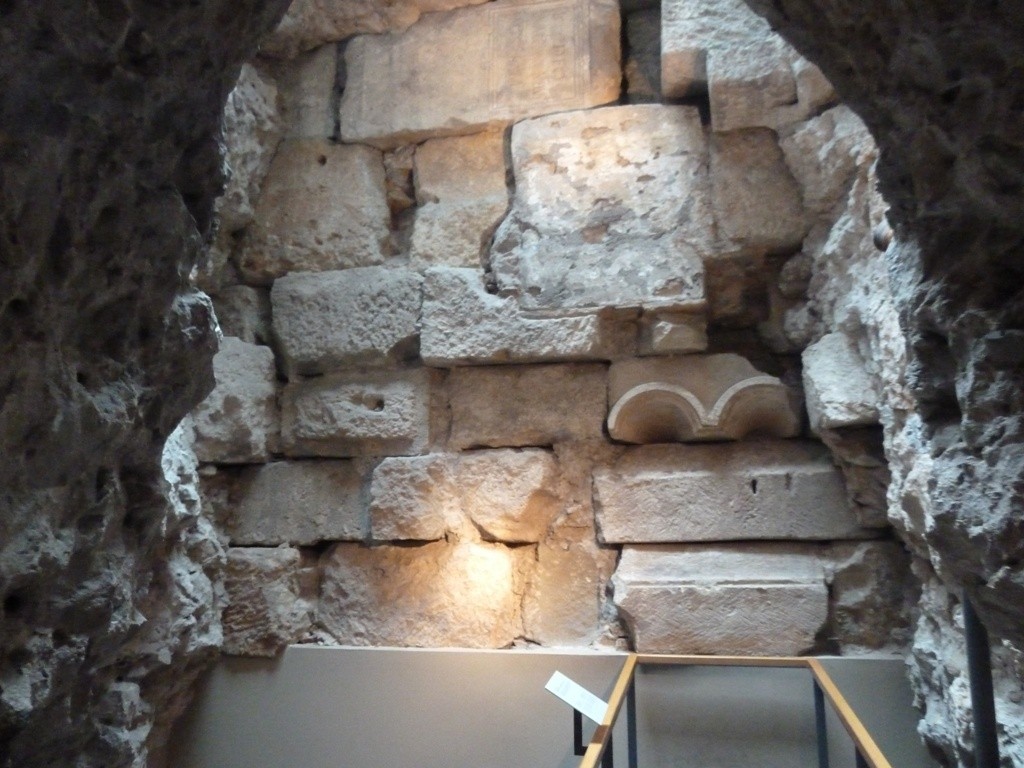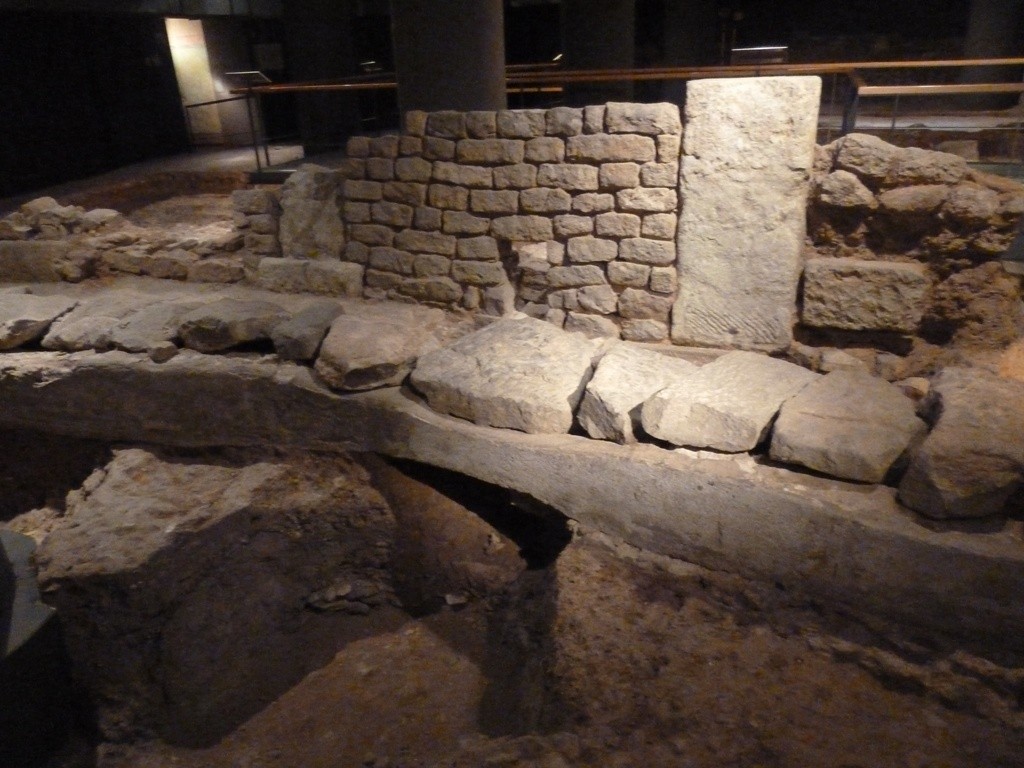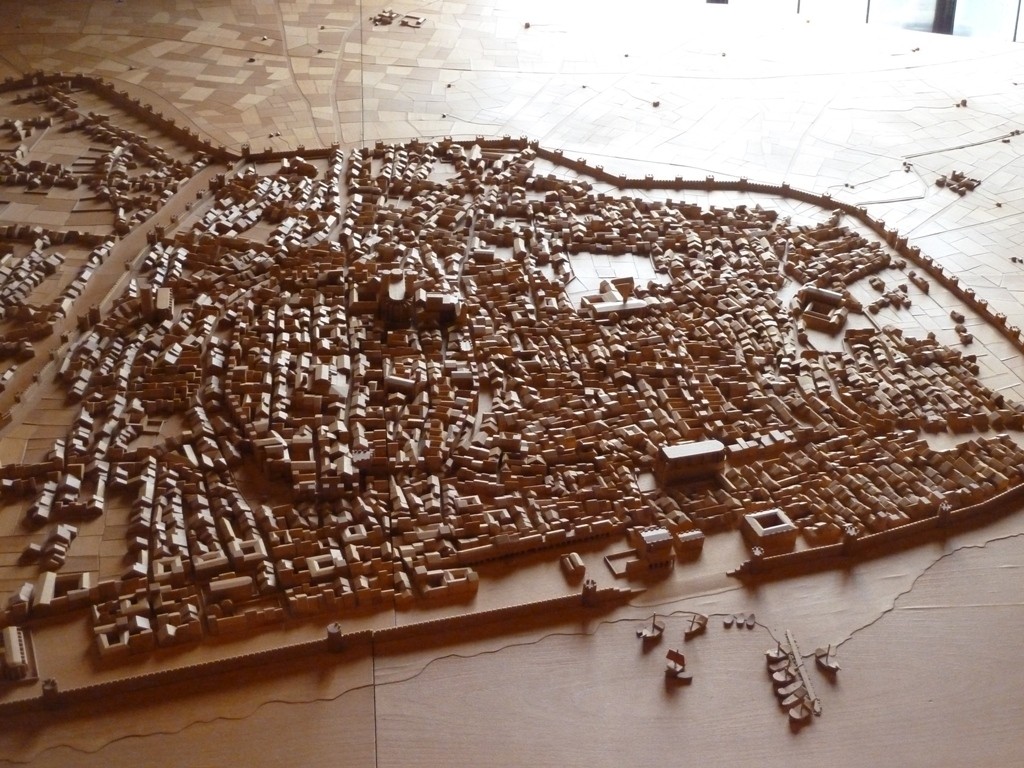If I had found the visit to the Museu Frederic Mares quite disappointing, fortunately I did not have to go very far to find something more interesting to see. Having gone through the wonderful Palau del Lloctinent, indeed, I reached Plaza del Rei, where the entrance to the Museu de Historia is located. Actually, the access to the museum is placed a few steps out of the square, along Carrer del Veguer, while the staircase leading to the Palau Reial, which most people mistake for the entrance, is in fact the way out. The entrance fee is higher than in Museu Mares, but on the other hand the visit will probably be far more interesting.

After an introductory hall where you will find explanations about the first settlements in the area of the current Barcelona, a lift will indeed bring you under the ground level. In this subterranean space, indeed, it is possible to see the ruins of the ancient Barcino, which were found in the 1950s below the surroundings of Plaza del Rei. The Roman town of Barcino was founded during the reign of the emperor Augustus, replacing the previous settlements of the Iberians. It corresponded broadly to the present centre of the city, the so-called Barri Gotic. Within a few centuries, Barcino became a thriving and active town, thanks to its favourable position which allowed to develop activities such as fishing, farming and trading. During the 4th century, though, the slumping power of the Roman Empire exposed Barcino, as well as other areas, to the incursion of the barbarians. For this reason, a mighty defensive wall was built in that period.

It is exactly that same surrounding wall, still less visible, which helps understanding the structure of the ancient Barcino: the area of the museum (as well as Plaza del Rei), indeed, is enclosed by the defensive line, as you will notice once in the underground area. After a few steps, indeed, you will be able to see the inside part of one of the 78 towers which originally guarded the old city. After a lit intermediate space, where the objects found in the ruins of an ancient domus (house) are displayed, the tour will go along the ruins, immersed into a charming semi-darkness. With a bit of fantasy, it is possible to see an ancient laundry, followed at short distance by a lavatory, whose ducts are still clearly visible. The reconstruction of this part of the ancient town, which was located at a certain distance from the protective wall, also includes a series of workshops, respectively assigned to the production of wine and of a sauce called garum. In both cases, it is still possible to see the concave containers where the liquids were preserved. Following the route, you will then admire the ruins of an ancient church (probably dating back to the 4th century as well) and a fine mosaic, located below the visitors passage.

Emerging once again to the natural light, you will find then as a continuation of the itinerary a couple of rooms explaining the evolution of the city since the 8th century (when it underwent the invasion of Arabs and Visigoths) to the 14th, when under the reign of Aragon it was once again a thriving and rich city. It is probably the less interesting part of the museum, but the following section will make up for it. When the tour seems to be over, indeed, the museum still has a surprise in store. At the end of the itinerary, indeed, you will end up straight in the heart of the Palau Reial. Besides a fascinating relief map, showing the evolution of the urban fabric, you will indeed have the chance to visit two interesting spaces. The Salò del Tinell, which in the 14th century housed the royal banquets, was at the time of my visit occupied by a temporary exposition which prevented me from appreciating it fully. Nothing spoile, instead, my pleasure in seeing the Capilla de Santa Agata. This delicious chapel, indeed, is a real gem despite its small size. Besides appreciating the fine architectonic decorations, it is also possible to admire a magnificent altarpiece and a series of colourful looking glasses, from which you will have a wonderful view of Plaza del Rei.

Even though the entrance fee is not exactly cheap (7,20 Euros) and the Roman ruins are of course not comparable to other archeological sites in Catalonia, I would therefore recommend visiting this fascinating museum, which will increase considerably your knowledge about the history and development of Barcelona.
